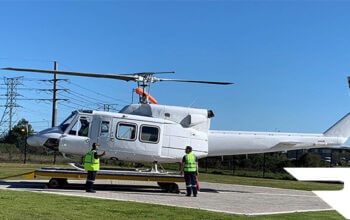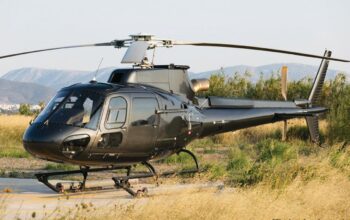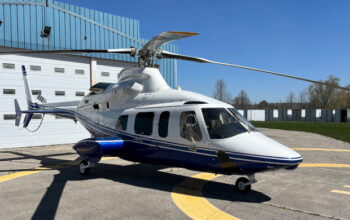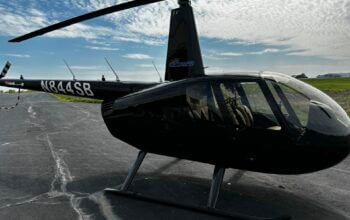Estimated reading time 11 minutes, 28 seconds.
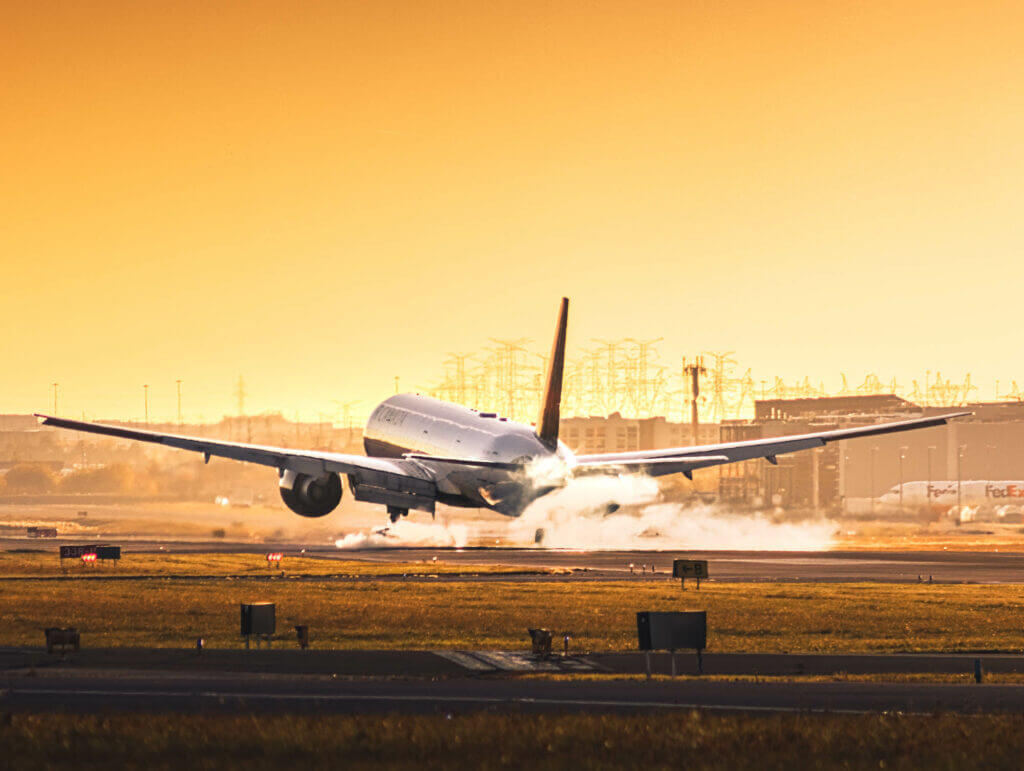
Canada has the feedstock capacity and industry programs to be a world leader in aerospace decarbonization, according to a leading aerospace company.
In fact, Canada has a significant role to play by being a major supplier of sustainable aviation fuels (SAF), Ross McInnes, chairman of Paris-based Safran SA, said during a presentation at the Oct. 11 to 13 Toronto Global Forum entitled, “The Pathway to Decarbonization.”
“In addition to having the necessary biomass feedstock, which, unlike Europe, is not constrained by agricultural priorities, you have companies and universities which have demonstrated the necessary technologies to move forward in this area,” he said.
However, Canada has yet to commercially produce a drop of SAF, often derived from used cooking oils, animal fats, or organic waste.
Meanwhile, the U.S. has embarked on an ambitious incentives program while the European Union has set a timeline for green fuel thresholds, whereby at least two per cent of its jet fuel must be sustainable by 2025, reaching six per cent in 2030, 20 per cent in 2035, and 70 per cent by 2050.
While SAF will play the largest role in achieving net-zero CO2 emissions by 2050, as adopted by the International Civil Aviation Organization, disruptive technologies (engines, making equipment lighter to reduce the overall weight of aircraft, etc.) will contribute 20 to 40 per cent towards the objective, said McInnes. Another five to 10 per cent of improvements will come from more efficient air traffic control systems, he added.
Although the industry has worked to improve its fuel economy, reducing CO2 emissions by 80 per cent per seat since the 1950s, we need to go twice as fast as that.
“Engines today can use up to 50 per cent SAF,” noted McInnes. “By 2035, it will be 100 per cent. There are new technologies on the horizon like hydrogen, but we can’t wait until 2050. We, as a company, have made a commitment for the mid-term (2035) to lower the CO2 emissions of our engines by 40 per cent compared to 2018.”
People want to fly, because high-speed trains are not always an option. In fact, there will be an estimated 30,000 to 40,000 new aircraft flying over the next 20 to 30 years, said McInnes.

The cost of SAF is more expensive than kerosene-based fuel, for example, but will be driven down by more volume. However, airlines need more incentives to get on board. Currently, the gap between SAF production and needs is one to 100, according to McInnes.
“We can’t have decarbonization if people see it as oppressive. Constraints have their limits. Politically, you must have the right mixture of incentives and funding and you must avoid taxing, because it doesn’t work.”
In 2022, Safran and GE Aerospace, through CFM International, signed partnership agreements with Airbus to fly two demonstrators, one testing the RISE open-fan engine architecture and the other a hydrogen engine. Demonstrations are planned for 2025 on an Airbus A380.
Safran is also helping to improve the efficiency of future aircraft through its equipment, cabin interiors, and seats businesses. Lighter cabins made using new materials and optimized electrical systems are key to making progress in these areas, noted McInnes.
Creating Change
The global aviation industry is under tremendous duress, primarily due to labour challenges, supply chain disruptions, and geopolitics, and it’s time to “seize the moment to create great change,” said Deborah Flint, president and CEO of the Greater Toronto Airports Authority.
On the plus side, demand for travel has never been stronger, she said during a session entitled “Fostering Economic Resilience.”
“The forecasts for travel, particularly for [Toronto] Pearson [Airport], are extremely robust and it’s time for us to move into becoming more resilient not just at airports, but across the entire ecosystem. And that’s why we’re stepping into a new era of investments.”
Is the industry underestimating the impact on the global economy of the conflicts in Ukraine and Gaza?
When it comes to the aviation sector, major investments happen over decades to build assets that are expected to last 30 to 40 years and major conflicts have little impact on those investments, but they do impact travel, noted Flint.

“Having said that, the aviation sector has proven its resiliency time and time again,” she added. “Here we are, less than four years after the global pandemic and most domestic and international travel has recovered by over 100 per cent from 2019. But the health of the industry to be able to recover faster is extremely connected to global politics.”
In terms of artificial intelligence, it’s already being used at some airports to detect or predict failures in baggage systems and even on the airfield. It can also be used to make the sky and flight path more efficient by reducing noise and emissions, according to Flint.
But Canada has a lot of catching up to do in terms of biometrics.
“For example, in the U.S, you can use your Apple ID for biometric identification. A trial facial recognition was carried out five years ago to board an A380 at LAX. So AI is already providing some applications that have to be managed. It can also be a security enhancer, especially as security verification becomes more and more important during these fraught political times.
“But my call to action would be for Canada to catch up in terms of the technology that’s available throughout the G7 and use all the capabilities that AI can bring,” said Flint.
Canada has an ambitious goal of increasing tourism by 60 per cent by 2030, which makes airport connectivity an important issue, according to Neil Pakey, CEO of Nieuport Aviation Infrastructure Partners which owns and operates the passenger terminal at Billy Bishop Toronto City Airport.
“There’s $28 billion that is ready or needs to be invested in [Canadian] airports by 2030 just to increase capacity. On the environmental front, sustainable aviation fuels will have the biggest impact on the industry.”
Billy Bishop is doing its part for the environment with its electric fleet of buses going into service next year, which will reduce carbon emissions by an estimated 2,100 tonnes a year. Coupled with the fully electric Marilyn Bell ferry, it will make Billy Bishop one of the greenest airports in the world, noted Pakey. In addition, he would like to get more SAF aircraft using the airport, but that initiative is tied to government policy.
“It’s a shame that Billy Bishop isn’t able to keep pace with the positive changes taking place elsewhere (including Australia where Nieuport’s owners are working to increase the supply of SAF at a number of airports) because of our outdated governing agreement. The right frameworks need to be in place to allow airports to plan appropriately.”
One of the key projects at the airport is the US Customs and Border Protection preclearance initiative backed by a $30 million investment from Ottawa, which should increase U.S. traffic by three-fold from its current direct service to five American cities, Pakey predicted.
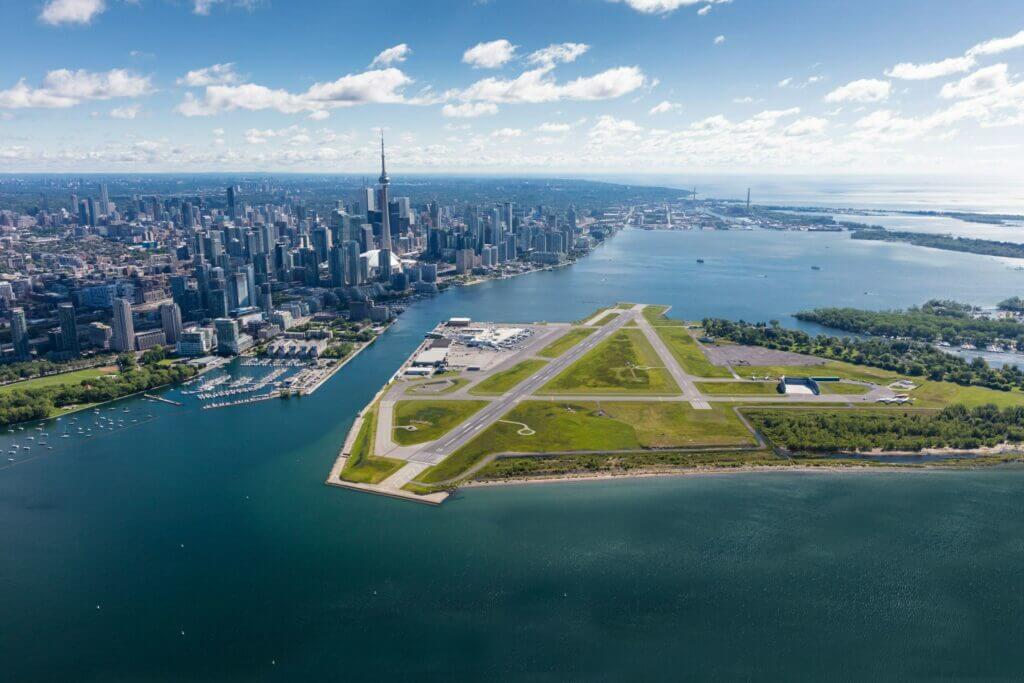
In addition to being a downtown hub for tourists and business travellers, Billy Bishop is the base for Ornge’s air ambulance service, which is a vital part Ontario’s health care system, Pakey noted. Hope Air, which provides free flights for medical emergencies to people living in remote areas, also operates out of the airport.
